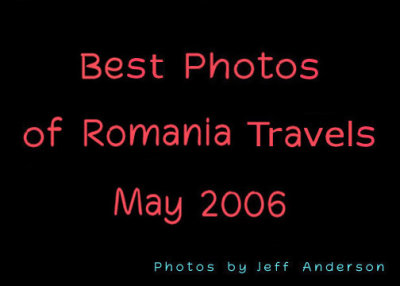
Best Photos of Romania Travels cover page. |

Map of Romania with the star indicating Bucharest. |

View of the Royal Palace (now used as the Parliament) built by Nicolae Ceausescu. |
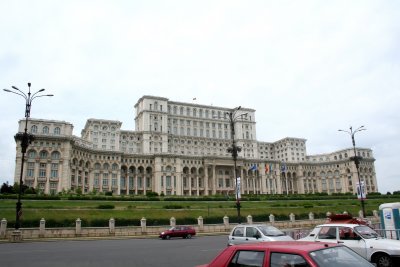
Nicolae Ceausescu's extravagance in building the Royal Palace probably helped bankrupt Romania! |

Interior entryway of the Royal Palace. |
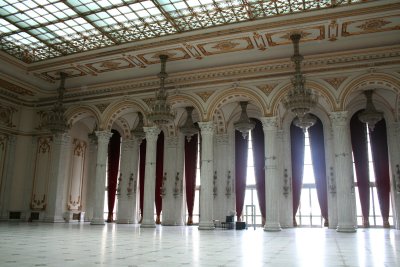
Ballroom of the Parliament with a glass ceiling. |
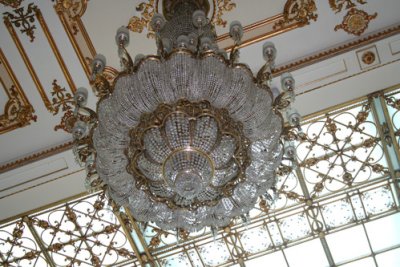
Chandelier in the ballroom. |
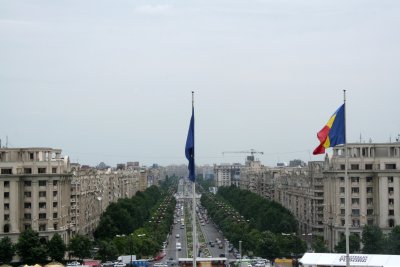
View from the balcony of the Royal Palace looking down on the fountains of Unirii Boulevard. |
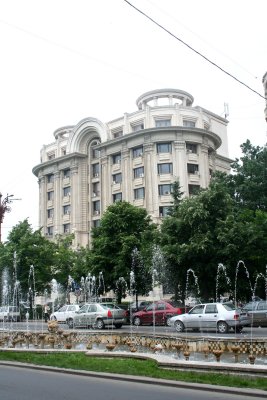
Nice architecture on Unirii Boulevard. |
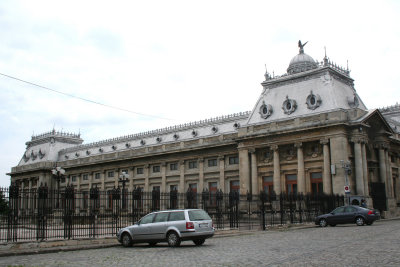
This former palace that stands next to the Patriarchy Church was constructed in 1907. |
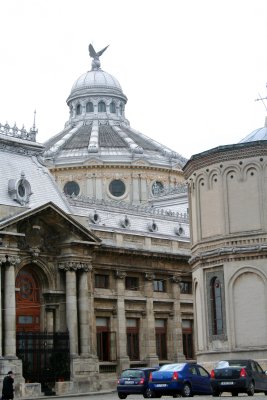
Another view of the palace standing next to Patriarchy Church. |

Alexandru Cuza's attempts at land reform led the local landowners to force him to abdicate. |
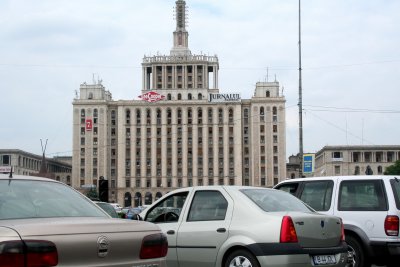
A (post WW II) Stalinist-style bldg. in Bucharest. Today, it is used for media (TV & radio). |
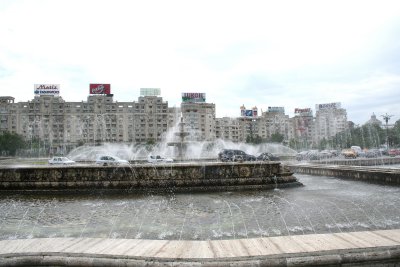
The fountains of Unirii Square (the largest square in Bucharest). |

Another view of the Unirii Square fountains with a Pepsi ad (note the can suspended in mid-air)! |
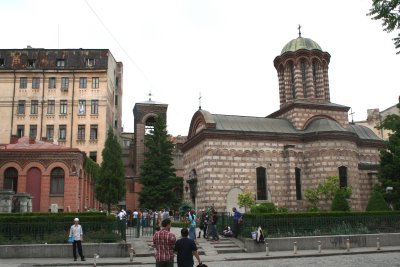
The Annunciation Church is the oldest church in Bucharest (erected between 1545-1554). |
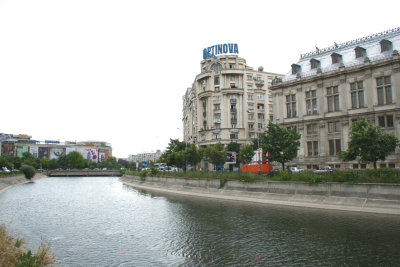
The Palace of Justice faces the Dambovita River. |

Another great building (on that same walk when I was lost)! |
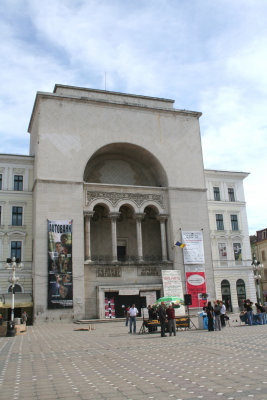
The Timisoara Opera House. |

Pigeons and people at Victory Square with Metropolitan Cathedral in the background. |
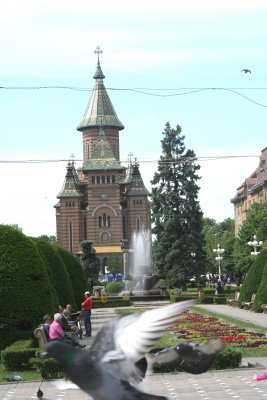
Victory Square with cathedral in the background. Check out that pigeon in the photo! |
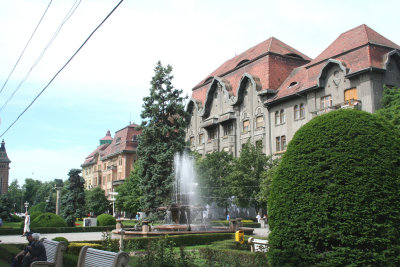
Fish Fountain in Victory Square. |
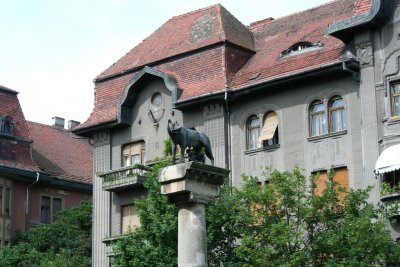
Sculpture of Romulus and Remus, which is indicative of Romania's Roman roots. |

The Metropolitan Cathedral (1936-1940) was designed by the renowned architect, Traianescu. |
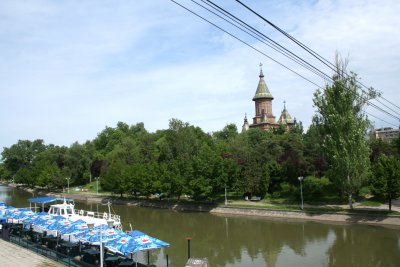
Bega River with Metropolitan Cathedral in the background. |
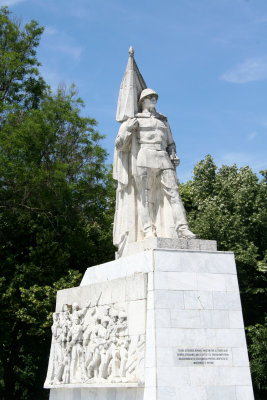
Timisoara War Memorial. |
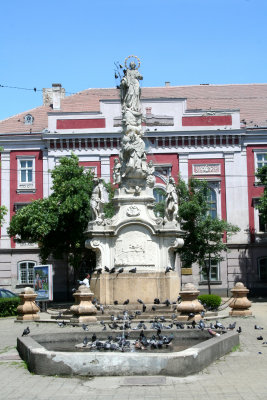
Liberty Square and sculpture which dates back to 1756. |

View of the Serbian Orthodox Cathedral. |

View of the 18th Century Roman Catholic Cathedral. |

Monument Saint Treime seen in the center of Unirii Square. |
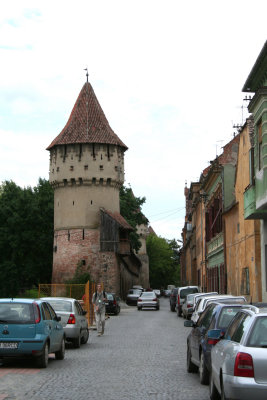
A medieval looking tower in Timisoara. |

Town Council Tower in Sibiu's Piata Mare (Big Square) was the entry gate to a 13th c. fortress. |

More buildings seen from Piata Mare. |
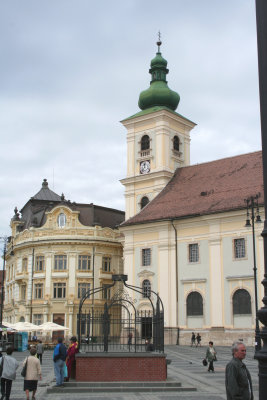
Buildings and a clock tower as seen from Piata Mare. |
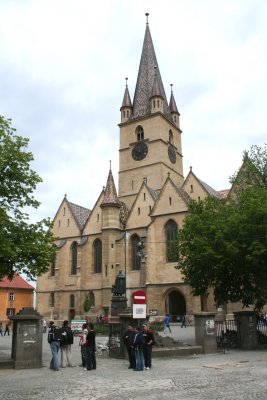
Entrance to Sibiu's Evangelical Cathedral. |

Doorway of a house with cariatides (1786) in Sibiu. |
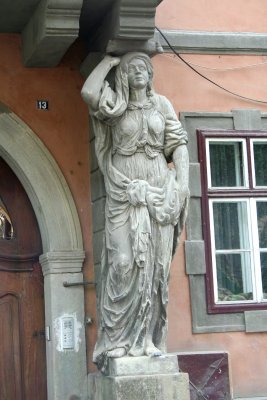
Close-up of one of the cariatides. |
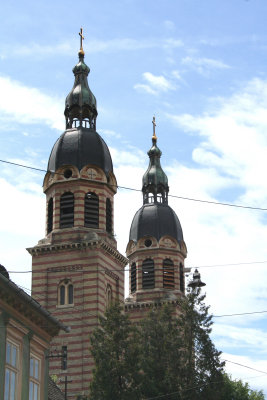
View of the towers of the Metropolitan Orthodox Cathedral (built between 1902-1906). |
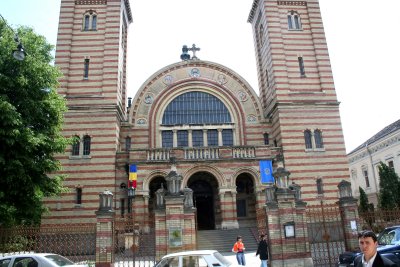
Front view of the Metropolitan Orthodox Cathedral. |
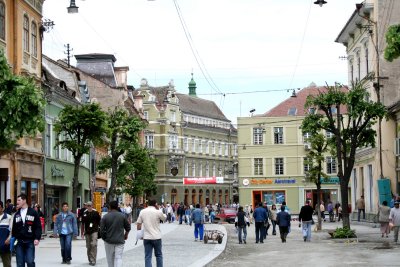
Main pedestrian street in Old Town section of Sibiu. |
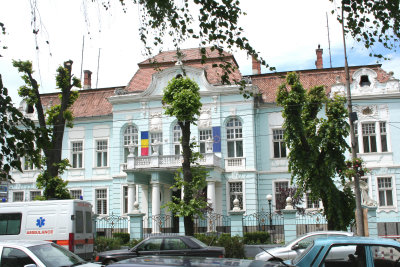
More beautiful Sibiu architecture! |
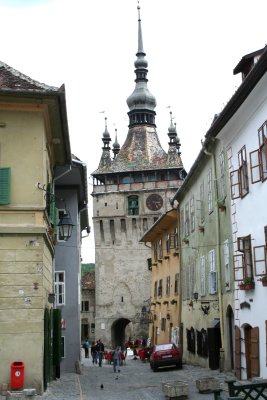
The 14th Century Clock Tower is the symbol of Sighisoara. |
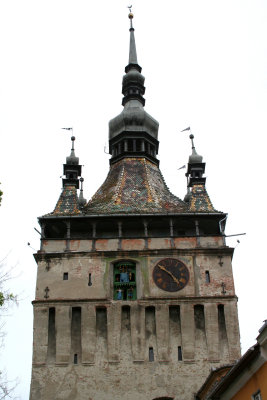
The Clock Tower hosted the Community Council for more than 2 centuries. |
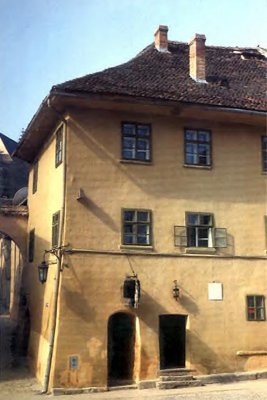
The house where Vlad Tepes was born in Sighisoara. |
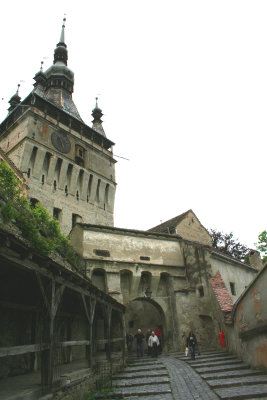
Looking up at the Clock Tower from stairs leading down to the Lower Town. |

View of buildings in the Lower Town section of Sighisoara. |
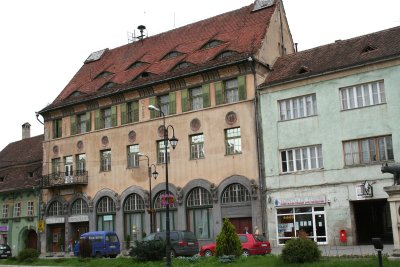
Typical Sighisoara Lower Town architecture. |

The Shoemaker's Tower with a tiled roof. |

Schoolhouse at the top of the "School Children Stairs." Those kids could afford to skip gym! |

A corner of the landmark "Stag House." |

Frontal southern view of Bran Castle which is on the top of a rock. |
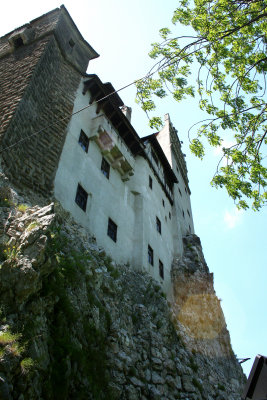
The castle belonged to Mircea the Wise, grandfather of Vlad Tepes (Dracula) between 1395-1427. |
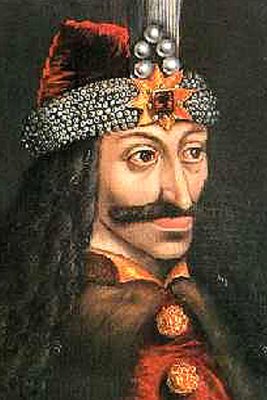
Picture of Vlad Tepes (also known as Vlad the Impaler) who the Dracula myth is based on. |
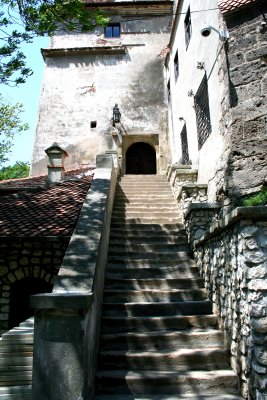
The steep stairs leading up to the entrance of Bran Castle. |

Door knocker on the front door of Bran Castle. |
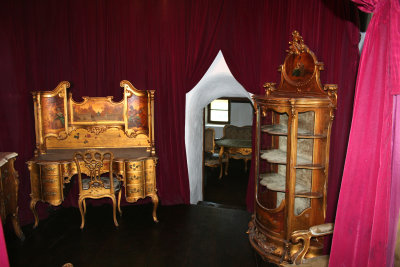
Nice makeup table and furnishings for Queen Marie! |

View of the courtyard, tower and rooftops of Bran Castle. |
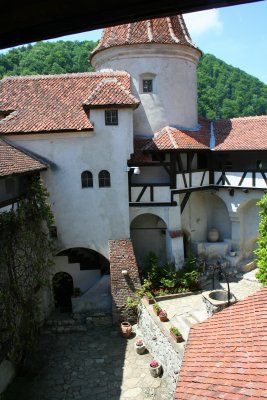
The fountain in the courtyard conceals a labyrinth of secret underground passages. |
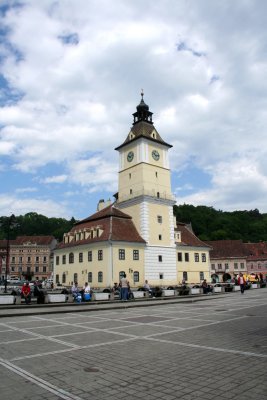
The clock tower of the Council House (1420) in the center of Council Square in Brasov. |
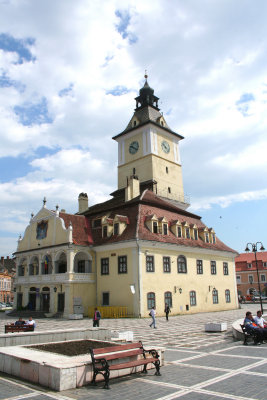
Council Square is the heart of a Baroque Brasov that is quintessentially Germanic. |

A little boy (& grandmother) feeding pigeons (the pigeons and the boy were having a good day)! |

Another vantage point of Council Square (note all the pigeons by the little boy)! |
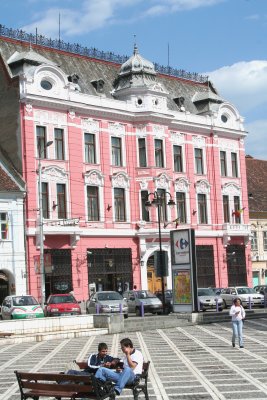
Close-up of Baroque-style building and people hanging out in the square. |
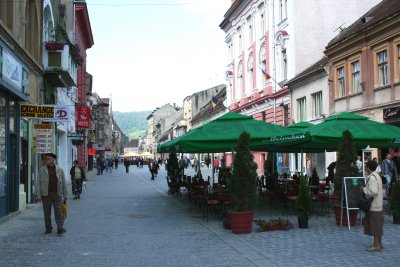
Pedestrian shopping street leading towards Council Square. |
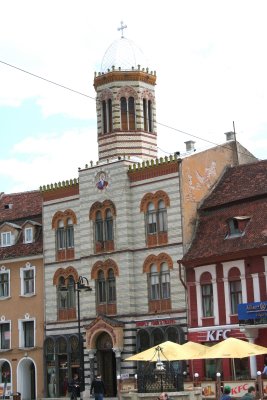
The Merchants Hall where guilds met. Apollonia Hirscher, the widow of a Brasov mayor, built it. |

The steeple of Brasov's Lutheran "Black Church." The Church took a century to complete. |
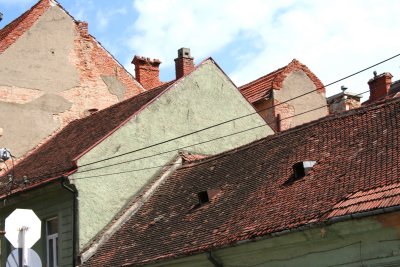
Typical tiled roofs in Brasov. |
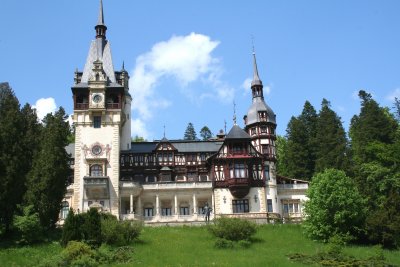
Peles Castle was built in the 19th century by Carol of Hohenzollern, the first king of Romania. |
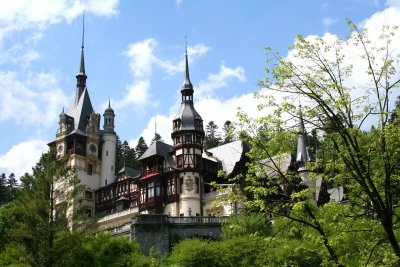
Peles has 160 rooms and a 66 meter central tower. It was royal summer residence until 1974. |
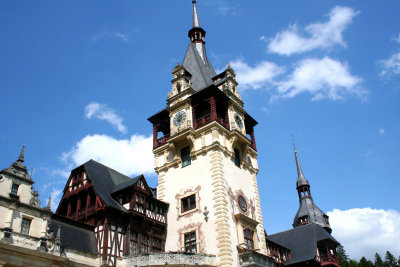
The clock tower from another vantage point. |
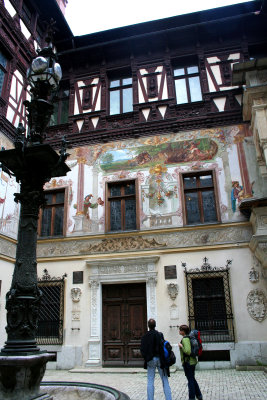
The wonderful neo-German Renaissance courtyard inside the entrance to the castle. |
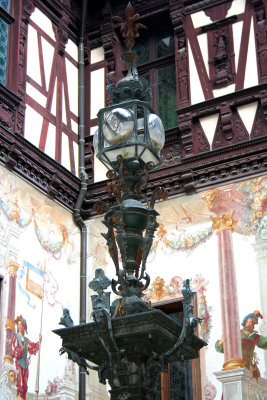
An ornate lantern inside the courtyard. |
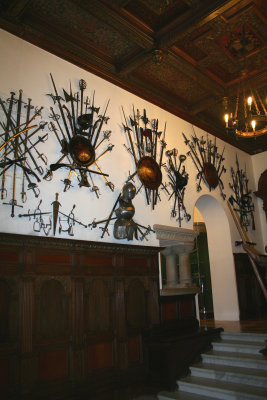
Medieval weapons on display inside the castle. |
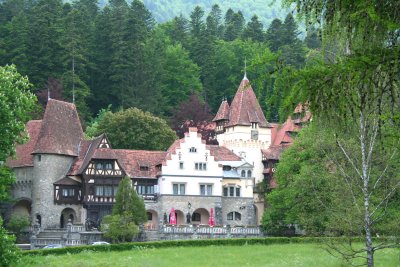
Near Peles Castle is Pelisor Castle (Little Peles) built by King Ferdinand. He succeeded Carol. |

Peles was too big for Ferdinand, so he built the 70 room, art-nouveau, Pelisor Castle. |
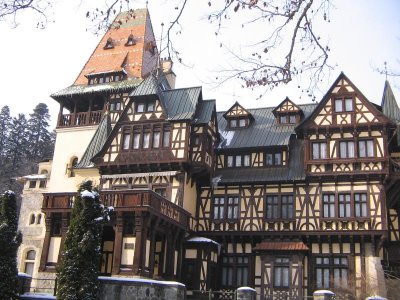
Another side of Pelisor castle. |
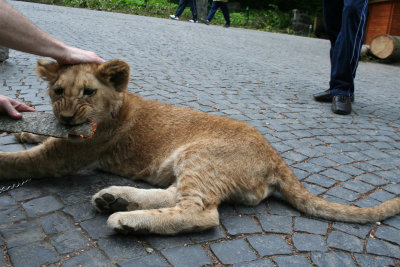
Lion cub gnawing on a stick piece of wood outside of Peles castle. |
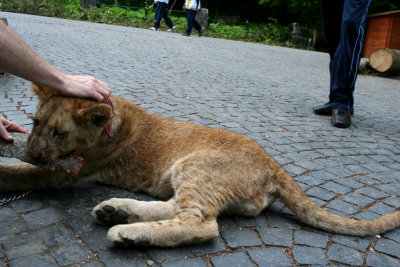
I wouldn't have been petting him if the cub were an adolescent! He'd be gnawing on my arm, instead! |











